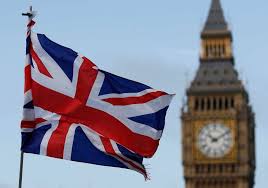A sharp decline in the British job market with rising unemployment and slowing wage growth.

The latest data released by the UK's National Statistics Office revealed a continued weakness in the labor market, with the unemployment rate rising to 4.5% during the period from January to March 2025, the highest since August 2021. Job vacancies and wages also experienced a significant slowdown.
Rising Unemployment and Declining Employment
The number of employed workers saw a sharp decline, with companies losing 47,000 jobs in March, followed by an additional loss of 33,000 jobs in April. Job vacancies also decreased by 42,000 between February and April 2025, bringing the total vacancies to only 761,000.
Liz McKeown, the director of economic statistics at the office, commented, "The overall picture still indicates a slowdown in the labor market."
Wage Slowdown and Inflation Pressures
Although basic wage growth (excluding bonuses) reached 5.6% annually in the first quarter of the year, the growth rate has started to slow down, although it remains higher than the inflation rate.
Ruth Gregory, senior economist at Capital Economics, attributed this slowdown to companies' response to tax increases and raising the minimum wage, stating that "further job cuts in April indicate that companies continued to respond to business tax increases and minimum wage hikes by reducing staff numbers."
Challenges for the Bank of England
The Bank of England faces challenges in its monetary policies due to growing wage pressures that may fuel inflation. Gregory said, "Continued high wage growth may push the bank to be wary of inflation pressures in the near term," confirming that "the gradual interest rate reduction path will remain a delicate balance."
This comes after the bank cut interest rates last week, with Governor Andrew Bailey signaling that any future cuts will be "gradual and cautious," closely monitoring the impact of wages on prices.
Labor Market Pressure Factors
This decline coincides with the implementation of corporate tax increases in April, approved in October 2024 as part of the government's budget, in addition to the 10% US tariffs announced by President Donald Trump last month. Employer contributions to national insurance also increased, adding to employment burdens.
While the UK economy strives to maintain its balance, the future prospects of the labor market remain subject to developments in tax and monetary policies in the coming months.